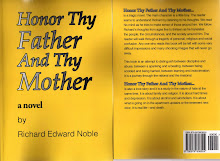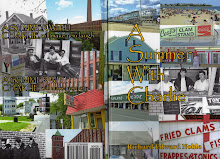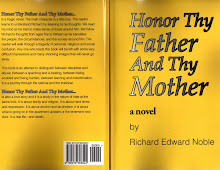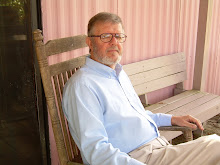
Steunenberg is Dead
"Striking America"
“Labor Day Tribute”
By Richard E. Noble
On December 20, 1905, as the ex-governor of Idaho opened the gate to his home in Caldwell, a bomb exploded. The Governor was mortally wounded and moments later, after being carried inside his home, he expired.
Idaho, Montana and Colorado had been a war zone since the 1880. Telluride, Cripple Creek, Colorado City had been the scene of many a labor/management confrontation. Hundreds had been killed. Feelings ran very strong on both sides of the picket lines. Governor Streunenberg had been elected with the support of labor. He held a union card himself He was a printer. As governor during the Coer d’Alene strike, he opted for martial law and sent in the Militia instead of supporting the union and some form of arbitration. Many miners were killed. The miners and union members looked upon Streunenberg as a traitor. The authorities naturally figured that the union had something to do with the Governor’s death.
The Western Federation of Miners was under the leadership of three men, Charles H. Moyer, George Pettibone, and William D. “Big Bill” Haywood. This union and these men were hated by the powerful Mine Owners Association and the civil authorities.
A man who went by the name Harry Orchard was arrested. Orchard was also known as Tom Hogan, but it seems that his real name was Albert Horseley. He was originally from Canada. He had abandoned his family in Canada and took up another or others in the States. He was a bigamist and had a clouded and sordid criminal reputation. He was found in a hotel room not too very far from the scene of the explosion and killing of Governor Streunenberg. He had been a member of the Western Federation of Miners and had been seen in the company of Moyers and Haywood. He was discovered in his hotel room days after the crime still hoarding string and dynamite associated with the crime. At least, that is what was claimed by the arresting police. For weeks Orchard denied any involvement in the crime. But, then the local authorities called in detective John McPartland of the Denver Pinkerton agency. From this point on this case gets rather strange. First, why would the police call in a private detective from another state? Labor Lawyers who had taken up Orchard’s defense questioned the legitimacy of such an action. William J. Pinkerton said that his agency had been hired by the governor of Idaho and that it was strictly business and had nothing to do with the reward money that had been posted.
McPartland had been around for a long time. In 1875, he was a key player in the strange case of the Mysterious Molly Maguires in Pennsylvania. He had infiltrated the Ancient Order of Hibernians. His testimony was directly responsible of the execution of ten members of the United Mine Workers Benevolent association and the imprisonment of several others. He was a well known advocate for management and anti-unionism. Now he was hired by the governor of Idaho, Gooding, to investigate, and personally interrogate Harry Orchard?
Harry Orchard is then transferred to the Boise Idaho State Penitentiary. There he is given private accommodations on death row. After getting the opportunity of sitting on death row and absorbing the feeling of what it might be like to await one’s own execution, he is then closeted in more congenial surroundings with the honorable Detective McPartland. The detective and he are treated to some fine cuisine after which they smoke cigars and Mister McPartland explains to Mister Orchard some of the ramifications of his present position. He is told the tale of Kelly the Bum who testified in the case of the Molly Maguires and saved his life. Not only that, he was given money and freed from prison. He was told about other such men who had repented their past and testified for the state to their later good fortune. He was also told about his most likely state, at the end of a rope, if he chose not to co-operate. Within a short period of time Harry Orchard not only confessed to killing governor Streunenberg but to nearly every other murder and crime committed in the western states, remotely relating to any Western Federation of Miners disturbance. And as proof of the authenticity of this elaborate confession, Harry Orchard proclaimed his salvation to the word of God as found in the Christian Bible as explained to him by “Father” McPartland.
Orchard implicated Moyer, Pettibone and Haywood. He alleged that he was on the Western Federation of Miners’ payroll, and had been given money for his crimes by its executives. He implicated two other men in his statements. One was Jack Simpkins, the other was Steve Adams. Simpkins disappeared shortly after Moyer, Pettibone and Haywood were arrested and was never heard from again. Adams was resettled and homesteading in Oregon. Adams was assured that he was only wanted for questioning. Nevertheless he ended up on death row discussing his situation with Orchard and then with McPartland. It took but a few days to get Adams to confess to crimes in support of Orchard confession.
The prosecution’s case was progressing smoothly; now to arrest Pettibone, Haywood and Moyer. They were all living in Colorado. They were not living in Idaho at the time of any of the alleged crimes. Problems arose with their extradition. They were not “fugitives” from Idaho. Technically, they could not be extradited. The Governors of the states of Idaho and Colorado and accomplices decided to simply disregard the law and basically kidnap the accused. Now Moyer, Pettibone and Haywood were sitting on death row in the Boise Penitentiary. Adams and Orchard had been moved to a private cottage on prison grounds. The case of the kidnapping was brought to the U.S. Supreme Court. The Court ruled that the accused were extradited illegally, but since the defendants were now imprisoned in Idaho, it was not within its jurisdiction to do anything about it. Dah? Although Adams was under strict scrutiny, an uncle of his was snuck in to see him somehow. The uncle told him that the union was going to get the famous Clarence Darrow to defend his case. Adams immediately recanted his confession. He announced that not a word of it was the truth and that he had been pressured and intimidated by McPartland and friends. McPartland and friends then decided to get Adams hung. In his confession, Adams had admitted to joining in with Orchard to kill two non-descript claim jumpers. Adams had supposedly killed a man named Tyler. Adams testified that McPartland had told him that it was his intention to get Pettibone, Haywood and Moyer. That was what this whole case was about. They wanted to bust the union, once and for all. Adams testified that McPartland had threatened and intimidated him, and that he was interrogated by McPartland before he ever had a chance to talk to a lawyer. The jury couldn’t make a decision. The Adams’ case was scheduled for a retrial. Before Adams could be retried, Haywood was brought before the court for murder. Clarence Darrow would be his defender and the soon to be famous Senator, William E. Borah, would be leading the prosecution. President Theodore Roosevelt hearing of the proceedings tagged the defendants as “undesirable citizens”. Union members all over the country were now wearing buttons that proudly stated, “I am an Undesirable Citizen”. The trial began in May of the year 1907. By July 29 of that same year it had been decided. In the mean time Harry Orchard had written his autobiography. He was rapidly becoming nationally infamous. The momentum of the trial had gone back and forth. Darrow criticized the evidence and the tactics of the opposition. In his final plea for the defendants which lasted for eleven hours Darrow made the argument that this business was not about Big Bill Haywood’s involvement in the murder of Governor Struenenberg. The prosecution had no such case. They had trumped up charges and bribed and intimidated witnesses. The real case on trial was the right of workers to organize and form unions. This was a case of the rich against the poor. This was a case of the bosses against the workers. The biggest worker of them all, Big Bill Haywood, was being railroaded, on the sole word of a known criminal. Big Bill Haywood, if found guilty, was going to be killed by the Mine Owners Association and their paid and bought political flunkies.
Darrow cried. The jury cried. The onlookers cried. Darrow had the whole room sobbing by the time that he was through.
But when Borah got his chance he was equally convincing. He argued for justice on behalf of the dead ex-Governor. He also had the jury and onlookers in tears. The outcome was thought to be a toss of the coin. Haywood was noticeably worried. The Haymarket Square Anarchists had been railroaded and hung. The Molly Maguires were hung. Union men and women were in prisons all over America. Why should his life be spared? He was without doubt the most wanted union organizer in America. His hanging could nail down the lid on this gang of radicals for a good time into the future. A jury of twelve small town farmers stood between he and martyrdom. One of the jurors had confessed in the pre-jury selection that he would hang an anarchist on sight. Darrow, nevertheless, accepted the man as a juror. Haywood had been kept in jail for eighteen months awaiting his trial. The trial lasted eleven weeks. The jury deliberated for twenty one hours. It was unanimous. Big Bill Haywood was found... not guilty. This was probably the biggest trial in American history, since John Brown was found guilty and hung.
Pettibone was then tried and acquitted. Charges were dropped against Moyer. Adams was tried a second time. The jury was once again hung. Adams was then extradited to Colorado where he was tried for another shooting. He was finally acquitted and freed. Orchard was tried and sentenced to death. His sentence was then commuted to life. He lived another fifty years in the Idaho penitentiary before he died in 1954.*
*Books used in the essay; “Attorney for the Damned” Clarence Darrow in the Courtroom, Edited by Arthur Weinberg; “Roughneck” The Life and Times of Big Bill Haywood, Peter Carlson.




































